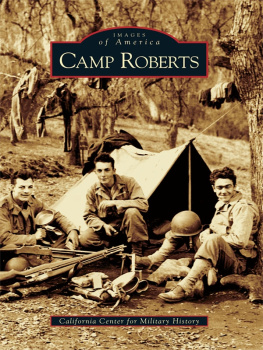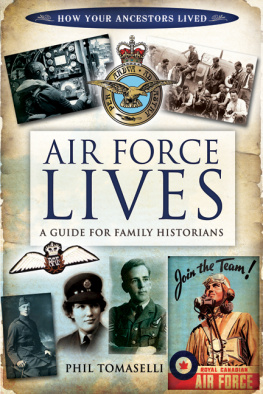Alternate
Route
The Ultimate Guide to Becoming a Pilot in the
Air National Guard and Air Force Reserve
Jeffrey Van Orsow
Copyright 2020 by Jeffrey Van Orsow
All rights reserved. No portion of this publication may be reproduced, stored in a retrieval system, or transmitted in any form or by any means electronic, mechanical, photocopy, recording, scanning, or other except for brief quotations, without the prior written permission of the publisher.
Cover design by David James
Printed in the United States of America
Foreword
Congratulations on taking the next step in your aviation career! Whether you are just looking into joining the military, have already started the process of interviewing for pilot slots, or are looking to transition from active duty, this book will help consolidate all the available information into one easy to use source.
Through my own personal experience and frustration, I found a great deal of information online, but none of it was directed toward my specific goals. I hope this book helps you better understand the process of getting a pilot slot in the United States Air Force, and that it contains all the information you need from start to finish.
I have used all of my resources to gather the best available information from the internet, hiring managers, recruiters, military and non-military applicants, and my own personal experience with the process.
Although this book explains how to get a pilot slot, I dont want that to get lost in working toward the underlying objective and responsibility of joining the military. Lets be very clear, you are joining the United States Air Force to become an OFFICER first and foremost! You are always an officer first, then a pilot or whatever your career title and specific function may be. Serving your country comes first and forms our core values. If you are ready to take on this challenge and experience the most exciting career in aviation, then lets get started!
Integrity First, Service Before Self, Excellence in All We Do!
United States Air Force Core Values
Jeffrey Van Orsow
Captain United States Air Force
First Officer Alaska Airlines
Table of Contents
Chapter 1
The Air Reserve Component (ARC)
Perhaps the best-kept secret of the United States Air Force is the Air Reserve Component, which is made up of the state-based Air National Guard and federally based Air Force Reserve. Becoming a Guardsman or Reservist within the Air Reserve Component allows an individual to join the Air Force and fulfil a service commitment to their country, with an incredible amount of flexibility that is just not available to active-duty Airmen. As a member of the Air Reserve Component, you have the opportunity to apply for the position of Pilot and choose your aircraft and/or base prior to making your Air Force commitment.
What is the Air National Guard and Air Force Reserve?
First, it is important to understand exactly what the Air Reserve Component is as well as the other entities it incorporates. According to the Congressional Research Service:
The term reserves is often used as a generic term to refer to all members of the seven individual reserve components. There is an important distinction between the five reserve components that are purely federal entities (i.e., the Army Reserve, Navy Reserve, Marine Corps Reserve, Air Force Reserve, and Coast Guard Reserve) and the two reserve components that are both federal and state entities (i.e., the Army National Guard and the Air National Guard). In this context, the five purely federal reserve components are referred to collectively as the Reserves, while the dual federal/state reserve components are referred to collectively as the National Guard.
This book specifically focuses on the Air National Guard and the Air Force Reserve components, as these are the entities which contain a significant number of military pilot opportunities that are less known to the general public. The information is generally drawn directly from my experience in the Air Force Reserve, which is also applicable to the Air National Guardalthough some small differences do exist between the two.
The Air National Guard is a sub-component of the National Guard, which is comprised of a part-time volunteer force serving both federal and state missions. These units are located throughout the U.S. and its territories, to allow citizens to fulfill their part-time military commitments in or near their own communities. Per the U.S. Constitution, each state's National Guard unit is controlled by its respective state governor in times of peace but can be called upon for federal duty by the President. The National Guard is controlled by the National Guard Bureau (NGB) and is a joint partner in the Department of Defense.
Similarly, the Air Force Reserve is a sub-component of the United States Air Force, which is comprised of a part-time volunteer force which serves only the federal government and not individual states. The Air Force Reserve supplements the active duty force in times of war and peace, both nationally and internationally. The Air Force Reserve is controlled by the Air Force Reserve Command (AFRC), headquartered at Robins Air Force Base (AFB), in Houston County, Georgia.
It is important to understand the difference between the Guard and Reserve, how they are controlled, and to whom they report. Often, the biggest difference between the two comes down to funding and control. The Guard and Reserve are funded differently through the Defense Budget and the lobbying of governors in the case of the National Guard. The best example of activating the National Guard in peacetime is when a state or region experiences a natural disaster like Hurricane Katrina in 2005 or Hurricane Harvey in 2017. In these cases, the National Guard was activated by the state governors in the affected regions in order to help with supplemental disaster relief.
Within the Air Force Reserve, there are three main categories of reservist. These include individuals who are Ready Reserve, Standby Reserve, and Retired Reserve. The Ready Reserve is comprised of part-time military members who are proficient in their Air Force Specialty Code (AFSC) or chosen career and are ready to be called to serve in times of war and/or crisis. Training is accomplished on a monthly basis and is meant to keep military members proficient and up-to-date on their Air Force Specialty Code.
The National Guard recruiting slogan of One weekend a month, two weeks a year is a fairly accurate representation of the time commitment Ready Reservists undertake. However, pilots have more flexibility in scheduling yearly training and time spent in and around their respective units.
The Standby Reserve includes those members who are medically unfit to perform duty, are temporarily disabled, or are experiencing a hardship. Standby Reservists are not required to participate in or accomplish training events, but are still subject to involuntary activation by the President should the need arise. Finally, the Retired Reserve are members who have completed military service and are eligible to receive retirement pay and benefits.
What Opportunities are Available?
The opportunities to become a pilot in the Air National Guard or Air Force Reserve are abundant, and interested candidates may choose from any and all available aircraft and base locations that best suit their needs. I recommend beginning by identifying the most important aspect of your Air Reserve Component career (aircraft type, base location, mission set, deployments, etc.) in order to identify the unit or units that will best fit your ideal circumstances.
The ability to choose your own career path is truly the greatest benefit of the Guard and Reserve. The candidate has complete control in choosing where they will be based or the aircraft they wish to fly by simply applying to the unit or units that fit their priorities. Some candidates wish to remain near their current community and select a unit that is close by. Other candidates apply to all units that operate a specific desired aircraft. Between the Air Force Reserve and Air National Guard, there are fighter, bomber, mobility, rotary, and unmanned (UAV) pilot positions. Next is a list of the available aircraft for each reserve component.









